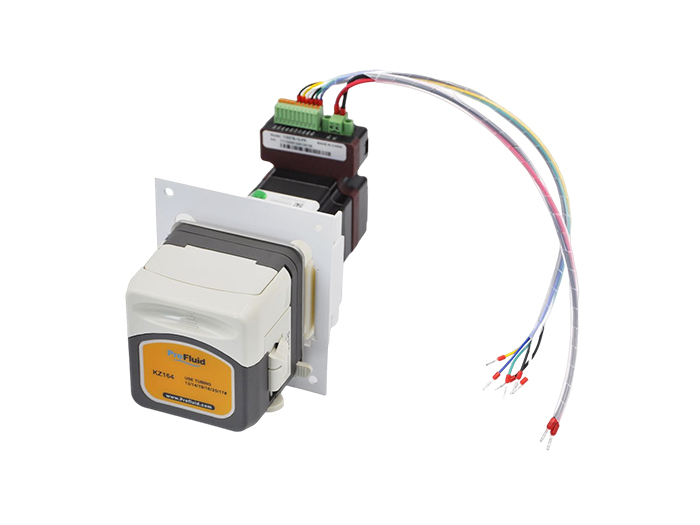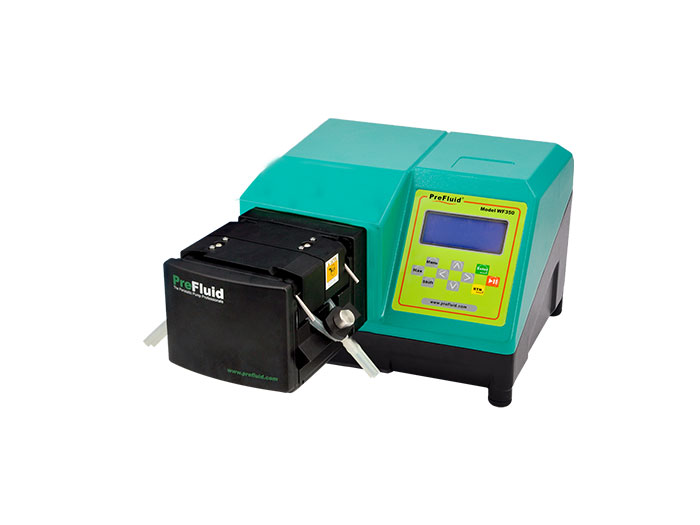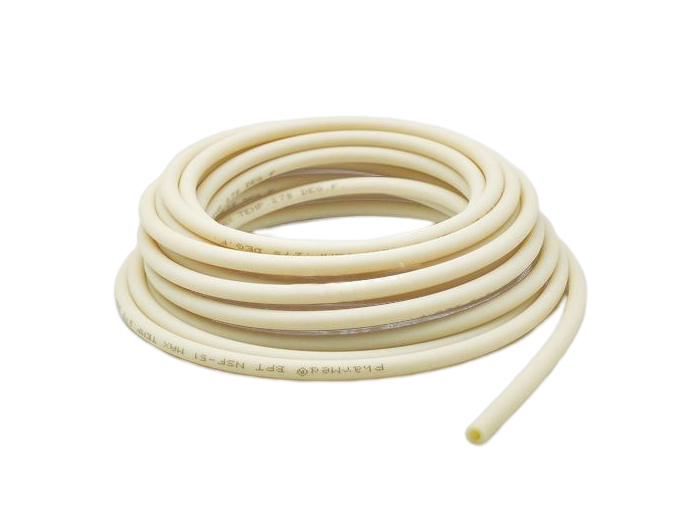Chemical compatibility refers to whether there will be a chemical reaction between the peristaltic pump tube and the liquid being transported, which is also one of the safety standards of fluid transportation. Therefore, when choosing the hose, we will pay attention to the performance of the conveying liquid, whether it is corrosive and so on.
I. Chemical compatibility
Chemical compatibility refers to whether there will be a chemical reaction between the peristaltic pump tube and the liquid being transported, which is also one of the safety standards of fluid transportation. Therefore, when choosing the hose, we will pay attention to the performance of the conveying liquid, whether it is corrosive and so on. In general, hose manufacturers will supply the corresponding performance table, which has a place to pay attention to, this table should be specially developed for the pump pipe chemical compatibility table, not for ordinary pipe chemical compatibility table. Because ordinary pipes have only general contact with chemical substances, and the peristaltic pump pump tube is in contact with chemical fluids under pressure conditions, so the chemical compatibility level of ordinary pipes and the chemical compatibility level of peristaltic pump pump tube cannot be equal. Therefore, only the special pump pipe should be referred to, rather than the chemical compatibility level of the general pipeline and related substances, otherwise it will make the pump pipe failure or damage crack leakage, resulting in damage or critical accidents of the pump. In addition, when referring to the table, you need to use each component of the liquid delivery to compare, not to save trouble only the main part of the comparison, because some acid or solvent in contact with the pump tube for a few hours or days, even if only trace, will cause enough damage to the pump tube.
Two, the working environment and temperature
The chemical resistance of the pump tube decreases with the increase of temperature. Some chemicals do not affect the hose at room temperature, but when the temperature rises to a certain extent, they will cause damage to the peristaltic pump pipe. Specific environmental conditions must be specified in the chemical compatibility table, especially the temperature limit, which can be used to determine chemical compatibility. If a chemical substance is not listed in the chemical compatibility table, or if the operating environmental conditions of a plant are too different from those specified in the table, tests can be used to obtain more reliable information. This method may be used in determining chemical compatibility if no other information is available.
Test method: Take a small section of pump pipe, weigh it, measure its diameter and length and other data. The pump line is then placed in an airtight container with the relevant chemicals and soaked for 48 hours. (Some materials are resistant to most chemicals. For example, the fluorine rubber pump tube can resist many inorganic chemicals, and even some organic chemicals, so it should need a certain amount of time to test). Remove the test tube, wash and dry, weigh and measure, and record the changes of the two measurements before and after. In addition, it is necessary to check whether the pump pipe has signs of softening or embrittlement. If there are data changes, it indicates that the liquid has damaged the pump pipe. After pre-selection of several types of pipe, each candidate pump pipe sample should be put into the actual environmental conditions of the plant for test run, and the test results should be closely watched. After trial operation, if the pump line does not show fading, expansion, cracking, loss of flow or other signs of deterioration, it is demonstrated that it can operate in this environment.
The operating temperature of the peristaltic pump tube is another important factor to consider. Like the commonly used silicone tube has high concave-convex temperature resistance characteristics; Some pipes, such as Tygon^ and C-FleX, are suitable only for a smaller temperature range. Before selecting the pipe, the end user should first make clear the operating temperature and the temperature of the transport liquid mentioned above, and then ensure that the selected pump pipe works safely within this temperature range. In applications where a gradual increase in temperature is required, the end user should consider the effect of temperature on the chemical resistance and pressure bearing capacity of the pump line. Sometimes when the temperature increases, the bearing capacity of the pump pipe will be reduced. Whether we refer to the compatibility table or conduct physical tests, we should focus on it and not bother, because this is responsible for ourselves and the project work.
3. Wall thickness
Through the working principle of the peristaltic pump, we can know that the peristaltic pump is to transport liquid by the roller in the pump to squeeze the hose to transport liquid, so the inner diameter of the pump tube and the thickness of the wall affect the volume of the liquid. The inner diameter affects the amount of fluid pumped by the rotor each turn, and the thickness affects the ability of the pump pipe to restore the original shape after each rolling, which greatly affects the service life of the pump pipe. If the hose size is too small relative to the size of the pump head roller, the pump head will not be able to stick the pump pipe, and the pump pipe will be pulled out of the pump head; And the size of the pump tube is too small, the roller in the pump head will not be able to pressure the pump tube, which will result in insufficient pump flow or complete failure. If the size of the pump pipe is too large, the excess pipe will cause wrinkles between the roller and the pump housing or between the roller and the bite bed, resulting in excessive wear and premature failure. The end user should follow the suggestions of the peristaltic pump manufacturer when choosing the pump tube size to ensure that the system functions well. In some applications requiring higher performance (such as chemical dose pumps), the role of peristaltic pump tube size is more prominent. A slight deviation of the size will lead to a large deviation of the flow or the arrangement of the quantity to be unqualified. Although some peristaltic pump manufacturers supply pump tube size and recommended size is very "close", "look the same", but often there is a gap. Therefore, in order to make the pump system achieve better performance and working accuracy, the user should use the pump pipe size that is completely consistent with the manufacturer's recommended size. In addition, every hose will have tolerances, among which, the smaller the tolerance, the better the performance, sometimes the same hose, some of the price is cheap, may be a little error in tolerance.
Four, the life of peristaltic pump pipe
There are many kinds of environment to use peristaltic pump, which needs to be selected according to different working environment and conveying materials. Good quality hose has good resilience and friction resistance, the longer the use of time, the lower the cost of pump shutdown maintenance, so we should analyze the data of the pump manufacturers before purchase, to understand the service life of each kind of hose, so as to develop a reasonable use of transmission system.
V. Transparency
In some industries, it is necessary to watch the liquid transportation in the hose to see whether the liquid responds to a certain light. In this case, it is necessary to use a hose with good transparency (such as Tygon polyethylene or silicone rubber and other transparent pipes) in order to watch the fluid, bubbles, particles, pollution and other conditions in the pipe. On the contrary, the opaque material is selected.
Six, air permeability
For gas-sensitive fluids, such as fluids susceptible to oxidation or anaerobic cell culture fluids, the user should consider the breathability of the pipe. Therefore, for fluids that are not suitable for contact with gas, pipes with lower permeability should be selected.
Seven, the price of peristaltic pump pipe
Cost is a factor that needs to be considered when making almost every project plan. As with any other component, the user should evaluate the overall use cost of the replacement pump line. Take silicone tube as an example, the main model is 13#~ 191#, its price is different, the use of imported silica gel raw materials, the wear resistance and resilience of this hose is better than some ordinary materials, is a cost-effective material.
Points to Note
1. Because of the different liquids delivered, the peristaltic pump tube is cleaned in different ways. Generally, it can be sterilized by high-temperature disinfection or alcohol disinfection.
2. Special pump pipes need to be cleaned with special cleaning agent, and then bubble with boiling water until the dirty matter in the pipes is leaked out. Because the silicone hose has good high temperature resistance and cold resistance, there is no need to worry about the high temperature will cause damage to the peristaltic pump pipe.
3. If it is a general industry hose, plus a larger number of conditions, you can directly use disinfectant to infuse bubbles.


